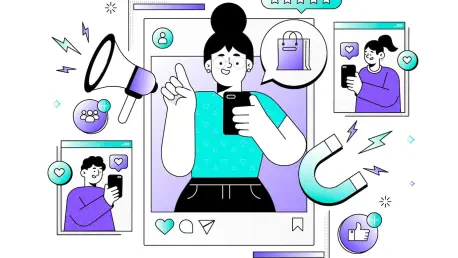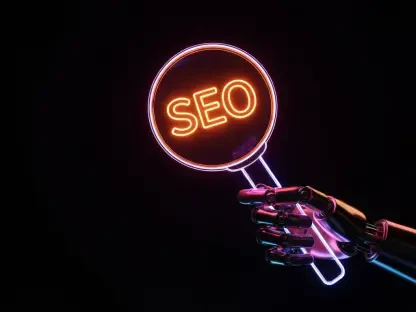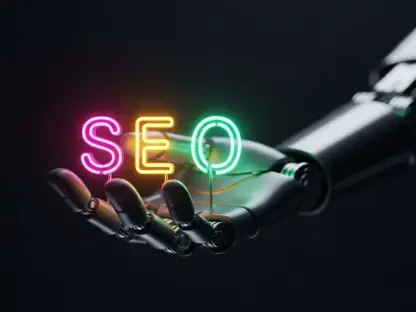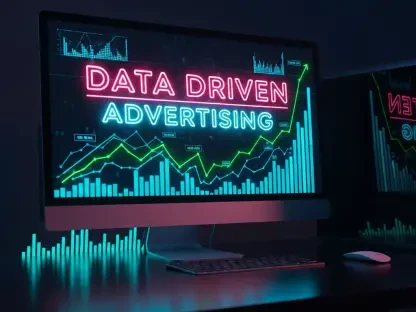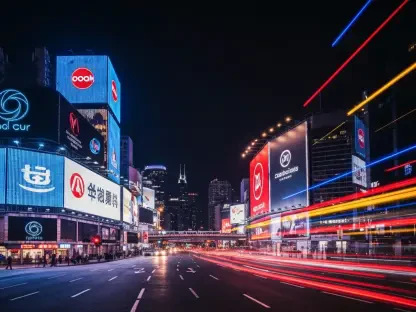Setting the Stage for a Digital Revolution
Imagine a digital landscape where a single post can ignite millions of interactions, where brands and creators converge to shape consumer behavior in real time. In Italy, this vision is a reality, as the influencer advertising market soared to a staggering €350 million in just two months, spanning May and June. This remarkable figure underscores the pivotal role of influencer marketing within the nation’s broader digital advertising ecosystem, a sector that continues to redefine how brands connect with audiences. Platforms like Instagram and TikTok have become the battlegrounds for engagement, hosting thousands of campaigns that blend creativity with commerce. This report delves into the dynamics propelling this industry forward, exploring key trends, performance metrics, and the challenges and opportunities that lie ahead.
The significance of this market extends beyond mere numbers, reflecting a cultural shift toward authentic, creator-driven content. With over 1,500 influencers and 1,000 advertisers driving campaigns across diverse sectors such as fashion, technology, and sports, the Italian influencer space is a vibrant hub of innovation. Major brands like Shein and Apple Italia, alongside top influencers, leverage cutting-edge tools like Media Consultants’ AdReport service to monitor and optimize their efforts. Regulatory frameworks also play a crucial role, shaping how transparency and trust are maintained in this fast-evolving arena. As the industry continues to mature, understanding its current state offers critical insights into the future of digital marketing in Italy.
A Deep Dive into the Influencer Marketing Landscape
Current State and Key Players
The Italian influencer marketing sector stands as a cornerstone of the country’s digital advertising framework, with a valuation of €350 million over the May-June period. This figure highlights the growing reliance on social media platforms to reach targeted demographics, with Instagram and TikTok leading the charge as primary channels for sponsored content. These platforms cater to distinct audience behaviors, enabling brands to craft tailored strategies that maximize impact. The market’s scale is evident in the sheer volume of activity, encompassing thousands of posts and collaborations that span a wide range of industries.
Key players in this space include prominent brands such as Shein, known for its fashion dominance, and Apple Italia, a leader in technology campaigns. Influencers, too, hold significant sway, with creators like Ginevra Giaccherini on Instagram commanding substantial followings and engagement. Technology underpins much of this ecosystem, with services like automated campaign monitoring tools providing real-time data on performance and audience interaction. Beyond individual players, the market is segmented into high-performing categories like fashion, tech, and sports, each benefiting from unique consumer interests and trends.
Regulatory influences are also shaping the landscape, as Italian authorities push for greater transparency in sponsored content. This ensures that partnerships are clearly disclosed, fostering trust among consumers while guiding how brands and influencers collaborate. Milan emerges as a central hub for much of this activity, serving as both a creative and commercial epicenter. Together, these elements paint a picture of a dynamic industry poised for further growth and adaptation.
Trends and Performance Insights
Emerging Patterns in Content and Engagement
A defining trend in the Italian influencer market is the overwhelming preference for video content, which accounts for 57.8% of Instagram posts and nearly 100% of content on TikTok. This shift toward dynamic formats reflects their ability to captivate audiences through storytelling and visual appeal, driving higher engagement compared to static images. Authenticity remains a critical factor, as consumers gravitate toward content that feels genuine rather than overtly promotional, pushing brands to balance creative freedom with marketing objectives.
Platform-specific behaviors further influence campaign strategies, with Instagram excelling in sustained interaction through longer-form content, while TikTok thrives on rapid, viral moments fueled by its algorithm. Demographic differences also play a role, as TikTok appeals predominantly to Gen Z with its fast-paced, trend-driven posts, whereas Instagram attracts a broader age range. Emerging content strategies, such as narrative-driven posts that weave personal stories with brand messages, are gaining traction, enhancing emotional connections with viewers.
Geographically, Milan stands out as the epicenter of influencer activity, mirroring its status as Italy’s fashion and media capital. This concentration fosters a synergy between creators and brands, amplifying campaign visibility in key sectors. As consumer preferences evolve, brands are increasingly adapting to these trends, prioritizing platform-native content and authentic voices to maintain relevance in a competitive digital space.
Data Highlights and Growth Forecasts
Quantitative insights from the May-June period reveal the market’s robust activity, with €350 million in ad spend fueling 4,835 Instagram posts and 4,839 TikTok posts across more than 1,500 influencers and 1,000 advertisers. Standout campaigns include Apple Italia’s Instagram post garnering 2.31 million views and Shein’s content amassing 12.12 million likes, showcasing the power of targeted collaborations. Engagement metrics underscore the effectiveness of these efforts, with sports and fashion campaigns often leading in interaction rates.
Contextually, Italy’s influencer market aligns with broader European digital advertising growth, which reached €118.9 billion with a 16% increase. This regional expansion provides a strong backdrop for Italy’s continued rise, bolstered by an influx of over 2,900 new advertisers in recent months. Looking ahead, sustained growth is anticipated through innovations like Instagram Reels and extended TikTok videos, alongside increased investment from brands seeking to tap into niche audiences.
Projections suggest that from this year to 2027, the market will see further expansion as new formats and cross-platform strategies take hold. The integration of advanced analytics and a focus on demographic targeting will likely drive efficiency in ad spend. As more advertisers enter the fray, the competitive landscape will push for creative differentiation, ensuring that the sector remains a vital component of Italy’s digital economy.
Navigating Challenges in the Sector
The influencer advertising industry faces several hurdles that could impact its trajectory if left unaddressed. One prominent challenge is the difficulty in attributing sales conversions directly to influencer content, particularly for products with extended purchase cycles. Engagement metrics like reach and likes are readily available, but linking these to actual buying behavior remains elusive, often frustrating brands seeking a clear return on investment.
Technological limitations compound this issue, as current tools struggle to track beyond surface-level data, necessitating more sophisticated attribution models. Market-driven obstacles, such as algorithm changes on platforms like Instagram and TikTok, can disrupt content visibility overnight, requiring constant adaptation. Additionally, the risk of audience fatigue from overly commercial posts threatens long-term engagement, as consumers grow wary of inauthentic messaging.
Potential solutions lie in enhanced data analytics that bridge the gap between engagement and sales, alongside cross-platform strategies to diversify reach. Emphasizing authentic content creation can mitigate fatigue, maintaining trust with audiences. Brands and influencers must also stay agile, adjusting to platform updates and prioritizing genuine storytelling to sustain impact in an ever-shifting digital environment.
Regulatory Framework and Transparency
Italy’s regulatory landscape for influencer marketing is evolving to prioritize consumer trust through mandatory disclosure of sponsored content. Clear labeling of paid partnerships is now a standard expectation, supported by platform features that distinguish promotional posts from organic ones. This shift ensures that audiences are informed about the commercial nature of content, fostering accountability across the industry.
These regulations influence how brands and influencers structure collaborations, requiring careful attention to compliance without stifling creativity. Transparency not only builds trust but also enhances the credibility of campaigns, as consumers value honesty in digital interactions. Platforms have adapted by integrating tools that simplify disclosure, aligning with broader industry standards across Europe.
The implications of these rules extend to long-term practices, striking a balance between regulatory adherence and innovative content. As compliance becomes ingrained, it shapes a more ethical marketplace, encouraging brands to invest in partnerships that prioritize integrity. This framework ultimately supports a sustainable environment where creativity and accountability coexist, benefiting all stakeholders.
Looking Ahead to Market Evolution
The future of Italian influencer marketing appears promising, with emerging technologies poised to redefine campaign execution. Enhanced analytics and AI-driven content optimization are expected to improve targeting precision, allowing brands to better understand audience preferences. Such advancements will likely address current measurement gaps, offering deeper insights into campaign effectiveness over the coming years.
Potential disruptors include shifting consumer demands for authenticity and heightened privacy concerns, which could reshape data practices. Growth areas such as cross-platform integration and investment in niche influencers offer opportunities to expand reach while maintaining relevance. New content formats, evolving from short clips to immersive experiences, will further diversify engagement strategies.
External factors, including global economic conditions and regulatory developments, will also influence the sector’s path. The ongoing expansion of Europe’s digital ad market provides a supportive backdrop, encouraging sustained investment. As these elements converge, the industry is set to navigate a complex yet opportunity-rich landscape, adapting to both technological and cultural shifts.
Reflecting on a Transformative Period
Reflecting on the insights gathered from the May-June period, the Italian influencer marketing sector demonstrated remarkable vitality, achieving a €350 million valuation that highlighted its economic significance. The dominance of video content and the emphasis on authenticity emerged as defining characteristics, shaping how brands engaged with audiences across platforms. Challenges such as measurement difficulties and regulatory demands were navigated with resilience, setting a foundation for future innovation.
Moving forward, brands are encouraged to prioritize platform-specific strategies, tailoring content to maximize engagement on Instagram and TikTok alike. Investing in advanced measurement tools is a critical next step to bridge the gap between interaction and sales outcomes. Additionally, fostering genuine storytelling offers a pathway to sustain consumer trust amid a crowded digital space, ensuring long-term relevance.
As the industry progresses, collaboration between creators, brands, and technology providers promises to unlock new dimensions of impact. Exploring untapped demographics and leveraging emerging formats are identified as actionable steps to maintain momentum. These considerations underscore a transformative era for influencer marketing in Italy, paving the way for sustained growth and deeper connections in the digital realm.
